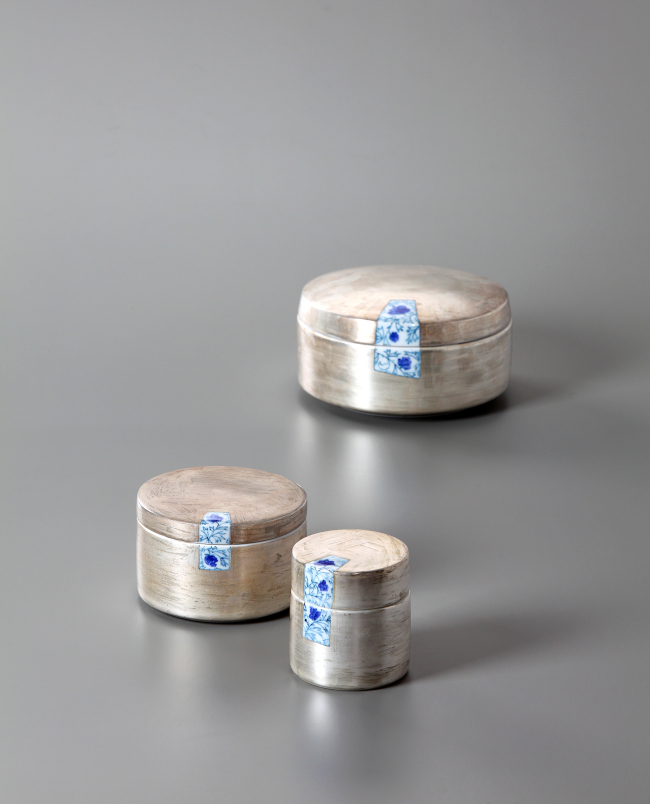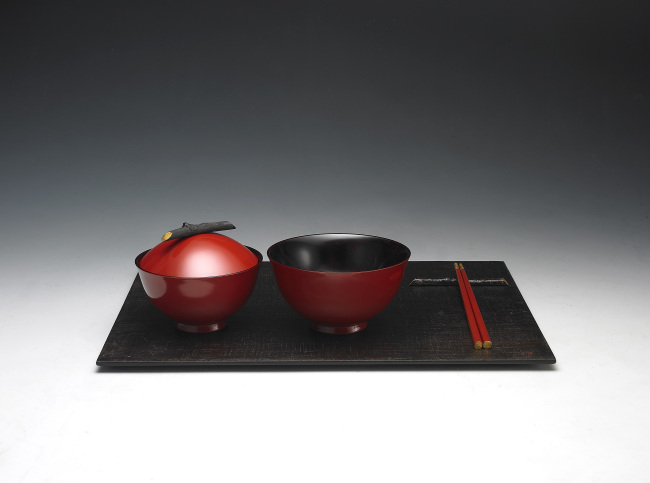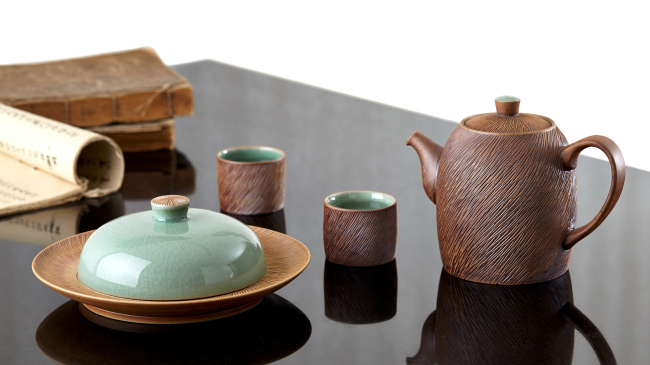Cooking doesn’t end when the food comes out of the oven. The finishing touch ― serving it on stylish dishes ― is necessary to elevate the culinary experience.
Refined and creative tableware by Korean craft designers and artisans, which create a sophisticated dining experience, is now on display.
Organized by the Korea Craft and Design Foundation and opened on Wednesday, the event is the biggest market and showcase of various craftwork made by Korean artisans across the nation. It is easily accessible to the general public by taking place at the old Seoul Station.
“This event lets visitors shop for craftwork. You can see it on exhibit and purchase what you like. It’s part of the effort to bridge the gap between the public and craftwork,” said Sohn Moon-su, cocurator of the 2014 Craft Platform.
 |
Tableware made through a collaboration between Korean culinary artisan Lee Ha-yeon and craft artisan Kim Hee-jong |
The exhibition presents a wide range of craftwork such as tableware, furniture, home decor items, accessories and clothes. But the highlight is beautiful dining table displays created by collaborations between well-known chefs and artisans. Four teams have presented elegant dining table displays featuring different tableware and cuisine. Park Hyo-nam, executive chef at Millennium Seoul Hilton, and an earthenware onggi artisan have come up with a unique combination of delicate French cuisine and rough, deep brown onggi plates and pots. Onggi is used to maintain the right temperature and speed of fermentation of traditional Korean cuisine, but when used with French cuisine, it highlights the food it contains.
“When the French cuisine is served in onggi, the visual satisfaction exceeds expectations. My customers say they are 200 percent satisfied,” said Park in a promotional film playing inside the exhibition room.
Brassware offers elegance to temple cuisine. The honest cuisine without artificial seasonings and spices is highlighted in the reflective golden brassware.
“Brassware helps the food it contains stay fresh. But it has not been used widely because it gradually loses its natural color as part of the oxidation process. Now more people are looking at brassware as a healthy food container and artistic tableware,” said curator Sohn.
Lacquer artisans have given a modern look to traditional lacquerware. Lacquered dishes have been hailed as they don’t wear out and keep food fresh. The lacquerware on exhibit is colorful, modern and perfect for a contemporary lifestyle.
 |
Lacquered tableware by Kim Seol (Korean Craft and Design Foundation) |
 |
A modern take on celadon by Kim Pan-ki (Korean Craft and Design Foundation) |
Celadon, widely considered an artifact from the Goryeo Dynasty, has moved from the museum display to the modern kitchen and living room. Designers incorporate materials such as lacquer and paint to traditional celadon to give it a modern look. Also on exhibit are tea pots, stationary and ornaments.
More craftwork is on display with matching decor items such as lamps made with Korean mulberry paper displayed with earthenware pottery and sets of pots and cups for alcohol and tea.
All craftwork made by artisans on exhibit are available for purchase at a museum shop. A section named Craft Department Store devoted to designers’ creations draws viewers with its shopping opportunities.
The Craft Platform continues through July 13 at Seoul 284, the former Seoul Station building, which is now an exhibition space. For more information, visit www.kcdf.kr.
By Lee Woo-young (
wylee@heraldcorp.com)










